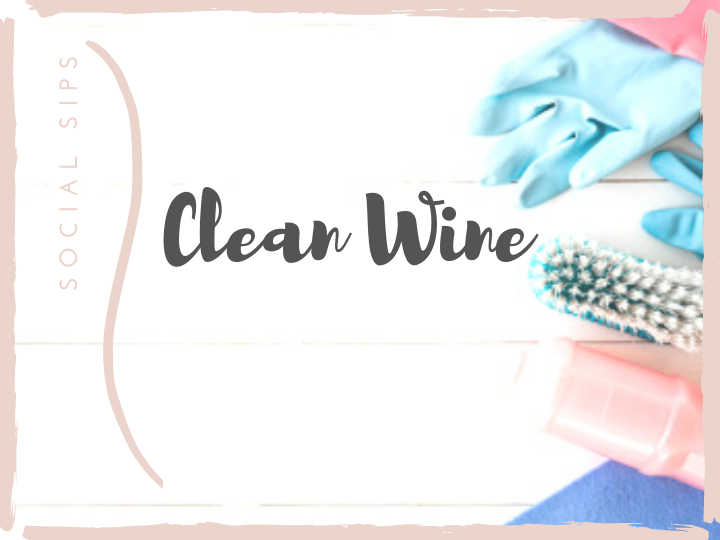Fads, trends or bandwagons. We jump on them, relish in their popularity and post pictures on Instagram to prove that we’re cutting edge. Trends happen in the wine industry all the time. Remember blue wine? Or canned wine? (I think we’re accepting that one might be around for a while). Well, the term ‘clean wine’ is trending right now. The problem is, it doesn’t actually exist! Today, we take a look at the reasons why clean wine isn’t an ethical wine term.
BUT FIRST, LET’S CLARIFY
Midway through writing this article, I realized that the headline can be interpreted one of two ways.
First, we could perceive that the term ‘clean wine’ isn’t being used ethically by those touting it to consumers. Alternatively, ethical wine is certainly something to strive for within the industry. Whether it be making wine using organic grapes, biodynamic principals or farming sustainably – numerous paths lead to the production of ethical wine. However, the creation of ‘clean wine’ is not one of them. Because again – clean wine doesn’t exist!
WHY ARE WE TALKING ABOUT THIS?
There’s been a ‘clean wine’ revolution for some time. For years, brands have been claiming to be low-carb or have no additives. Or perhaps low in sulphites or have the promise of no hangover.
The problem with these promises is that they infer that regular wine is high in carbs and has lots of additives. Or perhaps has mountains of sulphites and the promise of the worst hangover of your life!
It’s simply not true.
Things came to a tipping point this past summer with the launch of Cameron Diaz’s wine, Avaline. The actress found herself under industry siege. Here are the top 5 Avaline selling points and why the industry is calling the clean wine term into question.
- Made With Organic Grapes
are they certified organic? what about the winemaking process, is that organic as well? - Free of Added Sugars
most wine is free of added sugars - Free of Added Concentrates
most wine is free of added concentrates - Free of Added Colors
most wine is free of added colors - Vegan Friendly
wonderful, however, can it be certified vegan?
HERE’S MY BIGGEST QUALM
My biggest issue when it comes to the term ‘clean wine’ is that there isn’t a definitive definition or a certified body to enforce it. That’s why I say it doesn’t exist. Because there’s no standard. It’s simply a marketing term that’s thrown around on labels, websites and social media at zero cost to the producer.
For most producers, thousands (if not hundreds of thousands) of dollars are invested into transitioning vineyards to organic or even biodynamic. Further dollars are paid for the right to have that certification on the wine bottle label. It costs a lot of money to be truly ethical.
EDUCATE YOURSELF
This article has turned into a bit more of a rant than I was anticipating. But essentially, self-education should be your biggest takeaway. When you see something on a label that you’re unsure about, ask the clerk in the wine store to clarify. Heck, even send me a DM on Instagram!
Always ask or head to Google. Never stop looking for answers. And then make your purchase based on that educated decision. And if you still want to buy a ‘clean wine’, go for it! I’m sure it probably tastes good. The important thing is knowing what your dollars are supporting.
For a more in-depth look at the false claims of clean wine, take a look at this fantastic article on VinePair.com.

